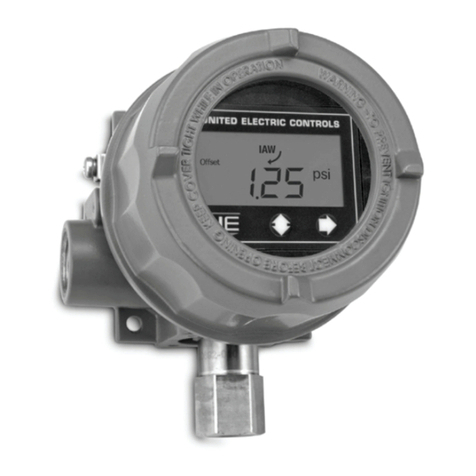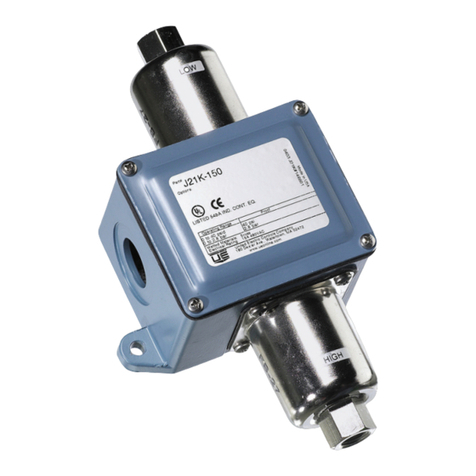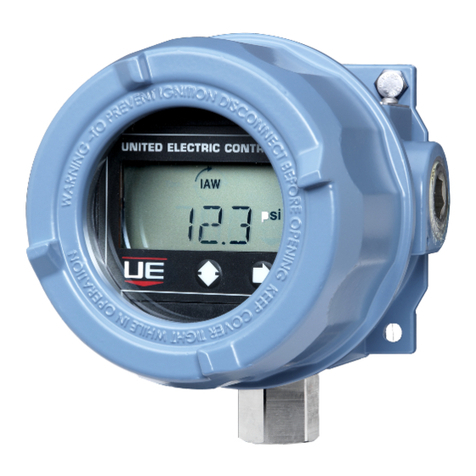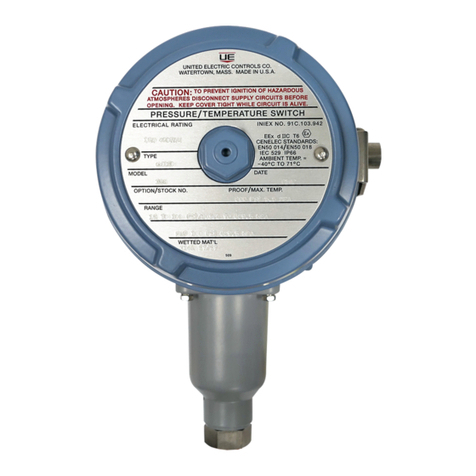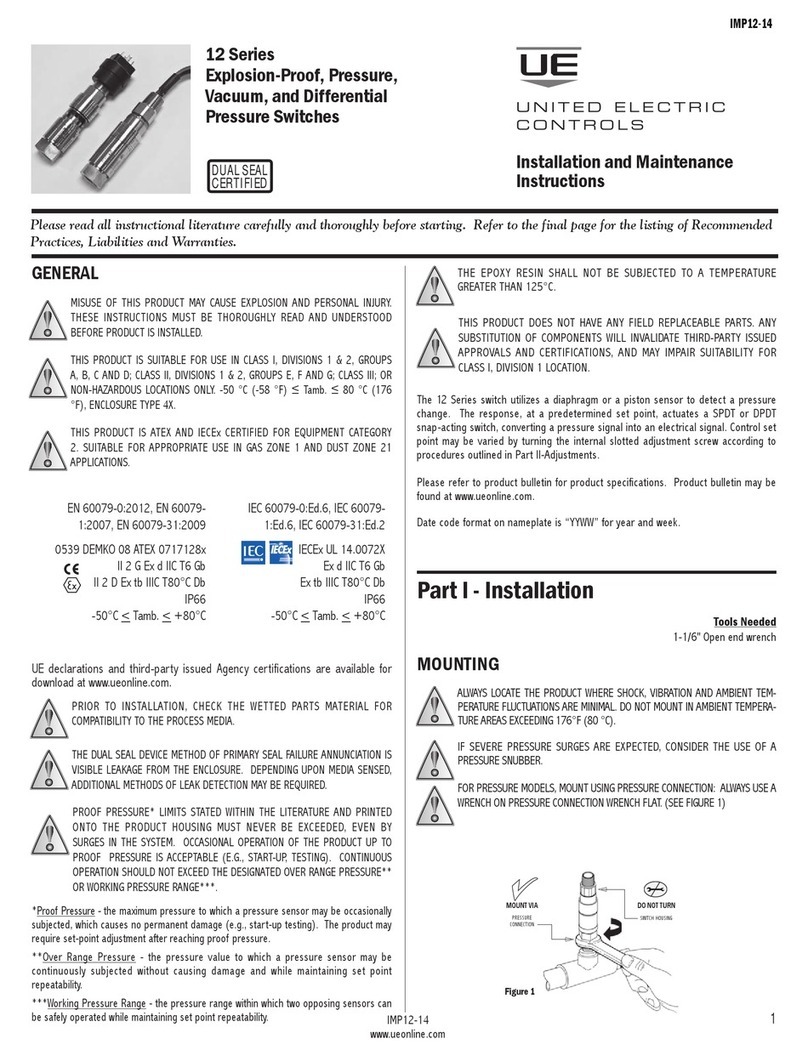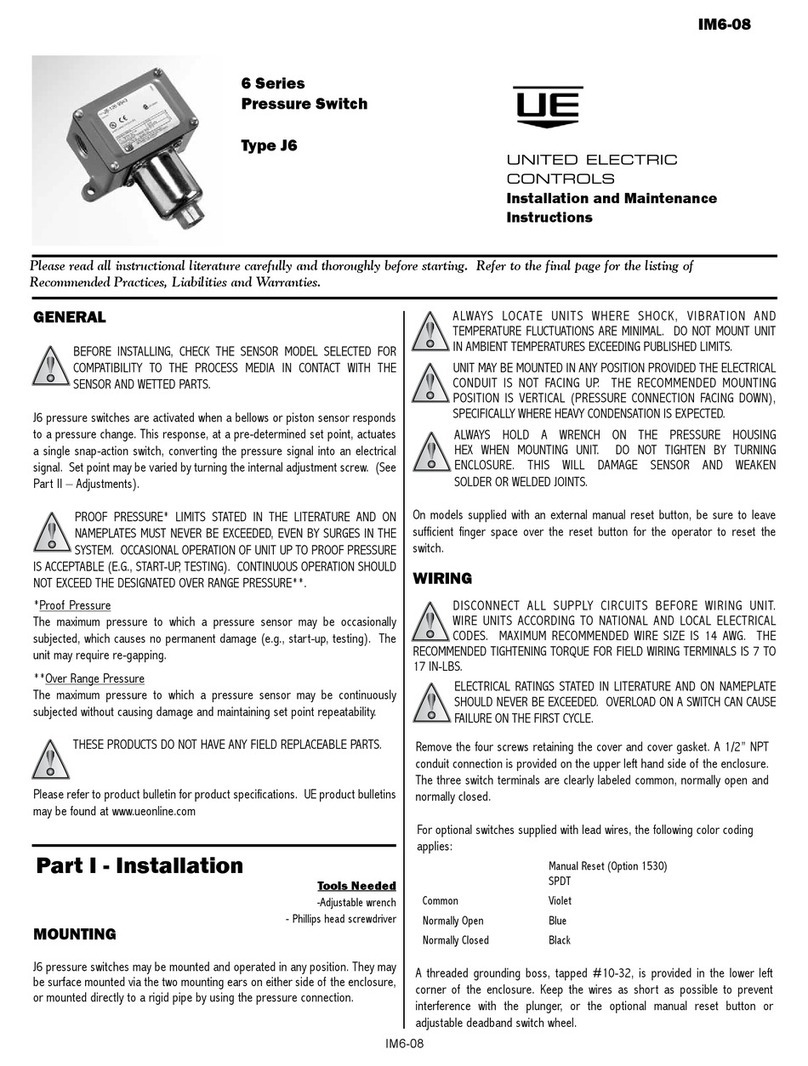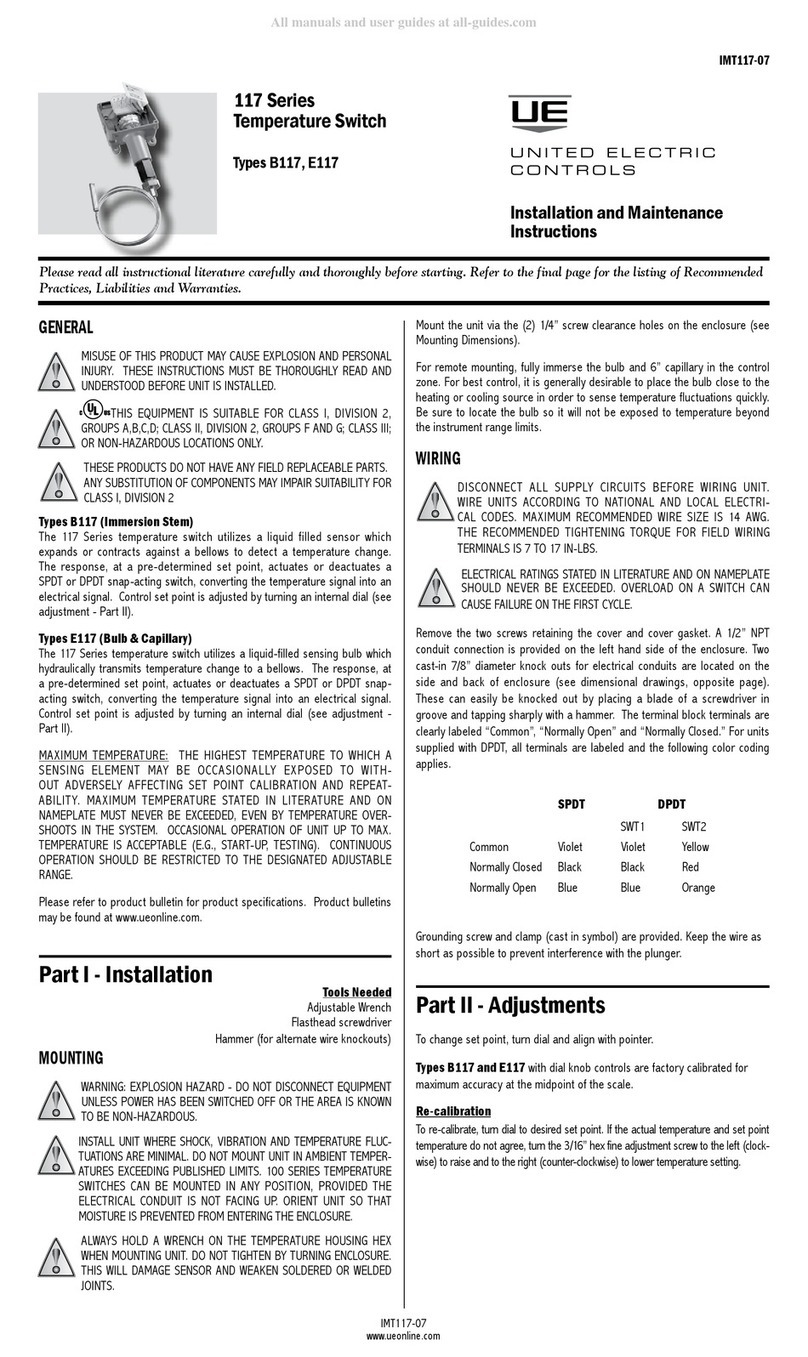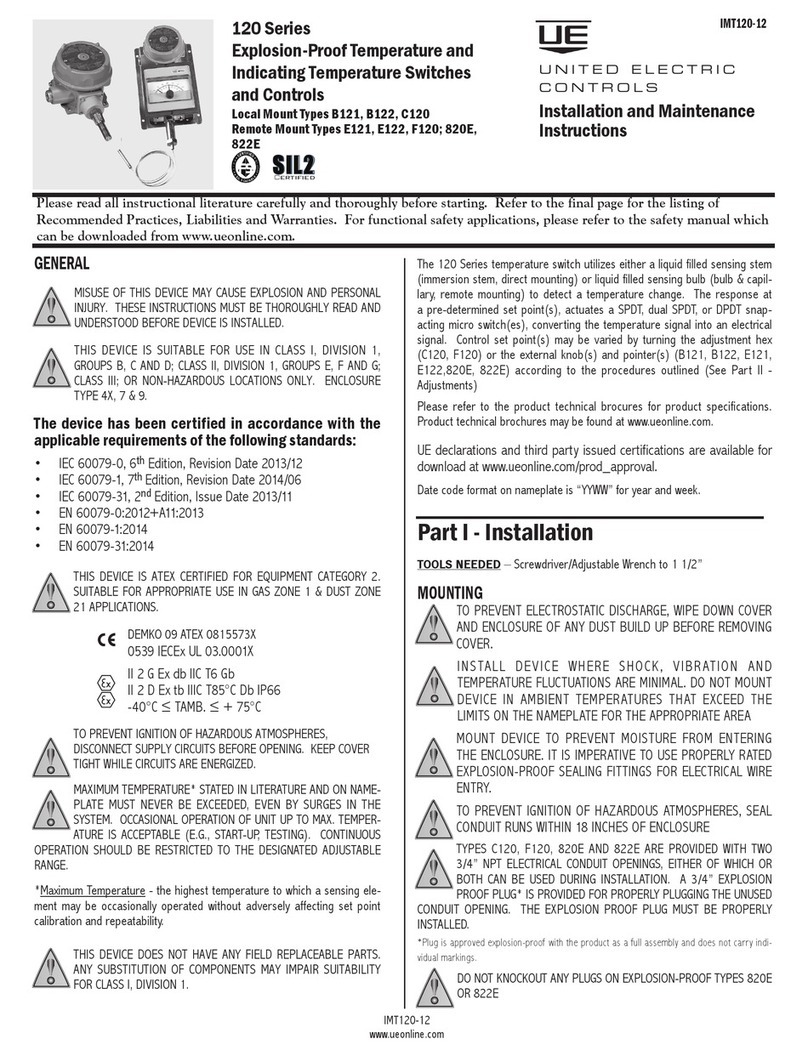
4
With Switch Rating Code A
Function Wire Gauge/Color
Switched Output (5 to 30 VDC, 100 mA max.)*20
AWG/Brown
IAW Output (5 to 30 VDC, 100 mA max.)*20 AWG/Orange
4 - 20 mA Output - Positive (+) (Optional) 20 AWG/Yellow
Power Supply Input + (18 - 30 VDC) 20 AWG/Red
Power Supply and Signal Ground 20 AWG/Black
With Switch Rating Code B
Function Terminal Label
No Connection Blank
Switched Output (5 - 30 VDC, 100 mA max.)*
SWT-OUT
IAW Output (5 - 30 VDC, 100 mA max.)*IAW
4 - 20 mA Output - Positive (+) (Optional) 4-20MA
Power Supply Input + (18 - 30 VDC) + VDC
Power Supply and Signal Ground COMMON
With Switch Rating Code C
Function Terminal Label
Switch Supply - IN(280 VAC, 15 A max.) VAC-HI
Switched Output - OUT(280 VAC, 15 A max.)
LOAD
IAW Output (5 - 30 VDC, 100 mA max.)*IAW
4 - 20 mA Output - Positive (+) (Optional) 4-20MA
Power Supply Input + (18 - 30 VDC) + VDC
Power Supply and Signal Ground COMMON
* Supply voltage on low voltage switched output (rating code A
& B) and the IAW output, must never exceed the unit's power
supply input voltage.
THEORY OF OPERATION
The One Series electronic switch evaluates the measured
process variable and switches the output ON or OFF based on
the set point & deadband values, and the selected switch mode.
Programmable features such as set point, deadband and switch
mode determine how the product is to operate and at what
values.
•The SET POINT is the value at which the output switch turns
ON or OFF to initiate an alarm or shutdown sequence.
See Setting of User Parameters - Set Point.
•The DEADBAND setting determines the difference above
or below set point at which the output switch will reset after
the set point has been reached. See Setting of User
Parameters - Deadband.
•The SWITCH MODE setting determines if:
◊The switched output is ON or OFF above or below
the set point value (NO or NC).
◊The local status indicator flashes to indicate the
switch output has tripped either above or below
the set point value.
◊The I Am Working (IAW™) signal flashes either
above or below the set point value.
◊The deadband is above or below the set point
value.
See Setting of User Parameters - Switch Mode.
•The - Extreme and + Extreme are the minimum and
maximum process values (lowest and highest) sensed by the
product. This provides a snapshot of process variations since
the last time these values had been reset by the user.
A local status indicator (LED) aids the user in determining the
switch output state. When the LED is illuminated continuously, it
signifies normal operation (no fault condition). A flashing LED
signifies a tripped condition (an alarm or shutdown condition,
process variable has surpassed the set point value). If the LED
is not illuminated, it signifies the switch has lost power or is not
able to function properly. Whether the LED output is ON above
or below the set point is determined by the SWITCH MODE
setting.
I Am Working (IAW™) signal provides a remote signal which
can be used to determine the “health” of the product. It can also
be used to determine whether the output has tripped. The
IAW™ signal has three (3) states:
•ON when the product is powered, and internal diagnostics
determine that it is functioning properly and the output has
not tripped.
•OFF when product has lost power or the internal
diagnostics have indicated a failure.
•Flashing ON and OFF (in 50 ms. intervals) to indicate that
the product is functioning properly but the output has
tripped.
The IAW™ output is an open drain (collector) output which may
be used as a signal to a PC, PLC or DCS logic input or to drive
a 5 to 30 VDC (100 mA max.) indicator lamp. The internal
diagnostics test the “health” of the microprocessor, sensor,
firmware and power supply for
proper operation.
NOTE: The power supply voltage for the IAW™ output must
not exceed the power supply input to the device.
The Switched Output may be used in a number ways to provide
local control of the alarm/shutdown circuit, eliminating the need
for remote monitoring, interpretation, and switching logic
algorithms in a PLC, DCS or computer. The One Series’
switched output is intended to initiate an alarm or shutdown
sequence locally and independent of other interpretive devices.
Either the low level open drain output or the optional high current
solid-state relay provide fast, reliable switching in the field at the
point of measurement. The switched output is designed as a
fail-safe-open circuit so that if the One Series loses power the
output will open.
The standard, open drain output may be used to trigger logic
level circuits to initiate an alarm or shutdown sequence. The
optional high level solid-state relay is intended to switch loads
directly such as relays, contactors or moderate AC voltage
loads.
NOTE: The power supply voltage for the low level version of
the switch output must not exceed the power supply input to the
device.
A LCD digital display (user adjustable version only) provides
additional information such as process variable (both numeric
and in a bar graph format), units of measure, and switch status.













